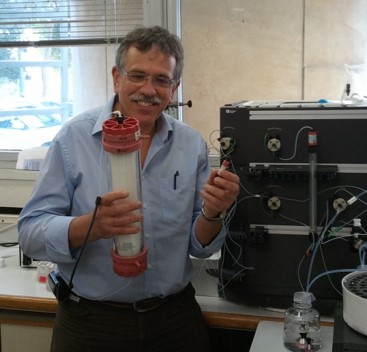Limited proteolysis
Authors Name:
Mario Lebendiker
Protocol Type:
Expert User
Authors Email
mario.l@mail.huji.ac.il
Affiliation
Wolfson Centre for Applied Structural Biology
Hebrew Iniversity of Jerusalem
Authors list:
Mario Lebendiker
Abstrakt:
Limited proteolysis is a simple biochemical method which can support information regarding protein structure, conformational changes (1 & 2).
The principle of limited proteolysis is that a protein is incubated with a relatively low concentration of different proteases, which cut at recognition sites throughout the protein, normally at exposed regions such as loops and other flexible regions (3 & 4)
Following digestion with a protease, samples are analyzed by SDS-PAGE to identify cleavage products. The appearance of lower molecular weight bands denotes digestion of the full length protein, and intensity and appearance/disappearance of bands can be closely monitored and quantified (3). Variables that can be used for results optimization: type of protease, protease dilution, temperature or time of incubation.
The method can be applied to establish the main domain of a protein for crystallization studies, or In situ proteolysis for protein crystallization and structure determination; or to infer the presence of stable sub-domains (1). It is also possible to obtain evidence of binding of one protein to another by running two identical sets of proteolysis experiments, one with the putative target, and one without. If the rate of digestion of the protein is slowed by the addition of the putative target, one can conclude that they interact with each other (1 and 5). Limited Proteolysis can be also be used as a Surface Probe for membrane proteins (7)
References
[1] S.J. Hubbard, Biochim. Biophys. Acta 1382 (1998) 191-206.
[2] Fontana A. et al., Folding Design 2 (1997) R17-R26.
[3] Quevillon-Cheruel S et al., Methods Mol Biol. 363 (2007) 21-37.
[4] Moldoveanu T. et al., Biochimica et Biophysica Acta 1545 (2001) 245-254
[5] Chazin Lab Protocol for Limited Proteolysis: http://structbio.vanderbilt.edu/chazin/wisdom/labpro/proteolysis.html
[6] Dong A. et al., Nature Methods (2007) Vol 12, 1019-1021
[7] Hargrave P. et al. (1980) Neurochemistry Vol. I, pp. 231-244


My favorite reagent for limited proteolysis is thermolysin. The main specificity determinant is a hydrophobic residue in the P1′ position. Because hydrophobic residues are relatively rare in solvent exposed loops, thermolysin tends to generate fewer false positive results when attempting to define stable subdomains.